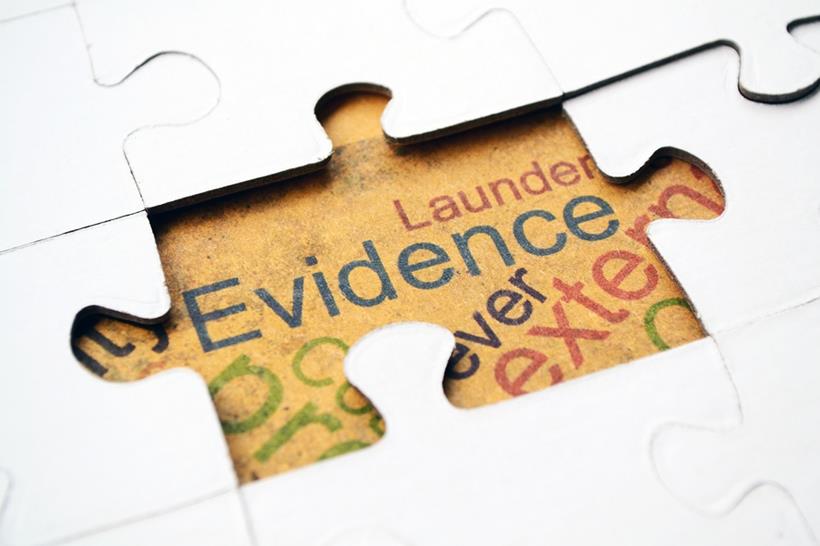
Senior executives’ responsibilities invariably involve making strategic decisions to manage positive and negative risks. If records managers want to be able to get enough interest from senior executives to receive a mandate and budget to implement a digital recordkeeping environment, they must become masters of the art of strategic planning and decision making.
Strategic decisions are decisions concerning initiatives or policy that have a long term impact on a business.
They are the “big picture” decisions that set the framework for future action in place. Strategic decisions involve making calls on the direction of an organisation and the future resource capabilities required to drive the organisation in the agreed direction. Strategic decisions are therefore, by their nature, high risk decisions. Make the wrong strategic decision today, and you and the organisation could live with the consequences for a long time.
When that picture and the risk to credibility associated with it, looms in the mind, people who are responsible for leading change through strategic decision making can become ineffectual in their role through prevarication.
Records and information managers are, by nature, risk averse. That’s a good thing, given that a major responsibility of theirs is to protect and preserve the past for access in the future. However, it does also mean that recognising and making true strategic decisions is a very challenging activity. Strategic plans are inclined to drift towards administrative decisions which involve day-to-day interactions with staff or tactical decisions for short term improvements. Such planning ensures that the impact of records management on the business is low. To meet basic compliance standards, most organisations need to make strategic decisions. To take advantage of the productivity enhancements and risk reduction that good records management practices can deliver strategic decisions are mandatory.
Strategy is a set of choices that describe, at a high level, how to achieve a major overall aim. Good strategy has impact, is inspiring and makes a difference. People talk about it; what going to be achieved and how much improved life will be.
It is created by making choices between two or more good strategic options. These decisions become the backbone of the actions to achieve the overall goal.
It sounds simple! Have a brainstorming session, come up with lots of good things that need doing in records management, and write them all down. Then list them down as a set of actions spread over 3 or 5 years.
However, you are unlikely to make any strategic decisions with that approach. You are more likely to have a list of routine operational decisions. By carrying these out you will merely be undertaking the responsibilities of records management at the lowest level, meeting the minimum requirements of the unit’s role in the business. True strategy, on the other hand, makes a deliberate change to the status quo.
The starting point of developing a strategy is the Strategic Goal; the major outcome to be achieved by the strategy. The Strategic Goal should be inspiring, and something that people will hold an opinion about, think about and talk about. An example of a Strategic Goal may be: “Within three years reduce operating costs by 10% through electronic processing facilitated by the capture of business records into official recordkeeping systems on creation or receipt”. Or: “’Able to provide within 24 hours of a force majeure the information to conduct our business and to resume normal business afterward by identifying and capturing all Vital records in digital format by 2014.”
The Strategic Goal of a records management unit must reflect and be seen to support the Strategic Goal of the organisation. For example, if the organisation believes it is necessary to cut costs then the records management unit needs to demonstrate to the Senior Executives how good records management practices and the functionality of an EDRMS can help reduce costs. If, on the other hand, the Senior Executives believe the Strategic Goal is to improve speed to market then the records management unit must demonstrate how cycle times can be reduced and better, informed decisions can be made obviating the need for rework.
The Strategic Goal sets the criteria for determining what a good strategic decision is; how you make a choice between the multiple decisions available. Within any given time frame, with the available resources, you will not be able to undertake every option. By evaluating the available decisions against the criteria you can ascertain which will be the most effective in achieving the goal.
It is timely to remind ourselves that goals need to be SMART: Specific, Measurable, Achievable, Realistic and Time Based. “Increase use of the EDRMS” is not SMART. Simple examples of SMART goals are:
- 80% of computer logins creating an average of 5 records per month in the EDRMS by December, 2016
- 90% of staff trained to use the recordkeeping system by February, 2014
These goals are specific, measurable and time based; whether they are achievable and realistic would be determined by the resources available and the current maturity of those activities in the organisation.
The next element of Strategic Planning is to decide what objectives will support the Strategic Goal. It is important not to set too many objectives over a short time frame. Four or so strategic objectives within a planning window of two to three years is normally all that can be achieved in full to a high quality standard.
In our Vital records example*, strategic objectives may include:
- Governance
- Competent people
- Risk management
- Quality Assurance
The third element of strategic planning is to identify the operational initiatives necessary to achieve the objective to implement the Strategic Goal. For instance, the following sample (listed in no particular order and not comprehensive) will all be excellent initiatives that will contribute to achieving the Vital Records Strategic Goal:
Undertaking these initiatives will increase staff engagement with the EDRMS, and therefore % of people using the EDRMS, but is insufficient to ensure we meet our Strategic Goal. To ensure the focus will be on the Vital Records goal we need to make more decisions in determining the emphasis and priority of people to be engaged and budget to be allocated. Therefore, for example, an initiative such as Basic EDRMS skills may be offered initially to only those staff involved in the managing Vital Records.
From our experience and research, we note that there are many records units who have no strategy at all. Some have business-as-usual plans which drift along without a specific aim. Some have project plans in the implementation stage of an EDRMS, often without a specific Strategic Goal, but no strategic plan. (In this case the momentum of the project is frequently totally lost on completion, as no-one has any clear direction on expectations post-project.)
We also note that even more records units want to have, but do not have, influence at the table of senior executives. Unfortunately, this will be forever so, unless we can learn not only to learn the language of senior executives but also learn how to develop and execute records management strategies that clearly underpin the Strategic Goal of the organisation, not a tactical records management goal created in isolation.
To do so, records management units must learn about the business, its processes, practices and policies and demonstrate how good record keeping practices and EDRMS functionality is an enabler of senior management strategy and not a sideshow to their main game. Records management units must also be able to demonstrate how they will execute their strategy through a clear cascade from the organisation strategic goal, the records unit strategic goal, objectives and initiatives to ensure senior executives are aware of the effort involved and the likely implications for budget requirements during the life of the strategy.
* “Ensure we have the information we need to conduct our business under other than normal operating conditions and to resume normal business afterward by identifying and capturing all Vital records by 2014.”







